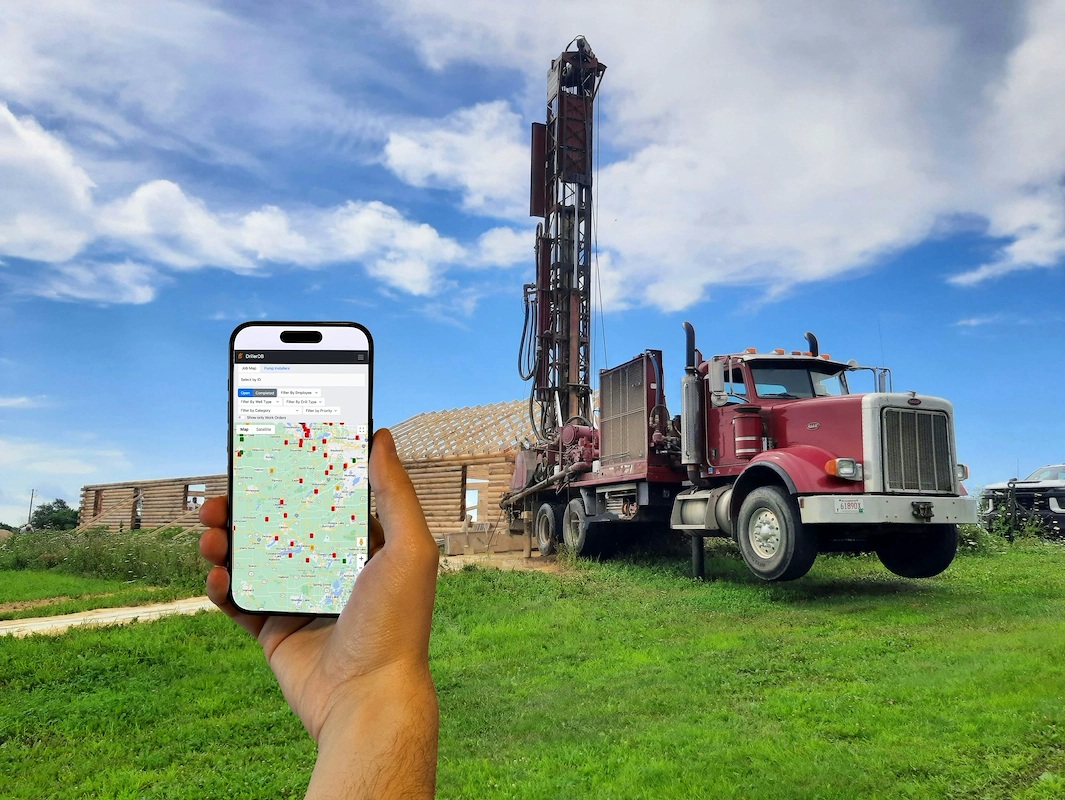If you’ve ever wondered how to start a small business, know that anyone can do it — even if you’re working with limited time, money, or experience.
The key? Breaking it down into doable steps.
Whether you're launching a side hustle or going full-time on your own gig, this guide walks you through the process from idea to income.
We’re keeping things real: no fluff, no jargon — just the essentials to help you go from “someday” to “I’m in business.”
How to start a small business step by step
The most successful business owners didn’t wait for the perfect moment: they made a plan, took the first step, and adjusted along the way.
Whether you’re building a side hustle or launching full-time, these 12 steps will walk you through what it actually takes to go from idea to income.
1. Refine your business idea
Every great business starts with a simple question: What problem are you solving?
Before you dive into branding or setting up shop, make sure your idea is clear, specific, and useful.
Think about:
- What are you selling? A product? A service? A mix of both?
- Who are you helping? Narrow down your audience. Don’t say “everyone” — be specific.
- Why now? Is there a trend or shift happening that makes your idea relevant?
Refining your idea isn’t about perfection — it’s about clarity.
The sharper your focus, the easier it is to explain, market, and build around it.
Not sure where to begin? Start with what you already know or a gap you’ve seen in your industry or community.
2. Do your market research
Market research means getting a real-world check on your idea.
Who are your competitors? What are your potential customers already doing to solve this problem? What’s missing?
Here’s how to keep it simple and scrappy:
- Talk to real people: Ask potential customers how they currently solve the problem your business addresses.
- Check out competitors: What are they doing well? What are customers complaining about?
- Look at trends: Use free tools like Google Trends or Reddit to see what people are saying about your niche.
The goal isn’t to copy — it’s to find your angle.
With good research, you’ll know if there’s demand, how to position yourself, and where to focus first.
3. Write a simple business plan
You don’t need a fancy template or 30 pages of strategy.
A simple business plan helps you stay focused and aligned as you grow.
Cover the basics:
- What are you selling? Describe your product or service clearly.
- Who are your customers? Define your target audience.
- How will you make money? Lay out your pricing model, expected costs, and how you’ll get paid.
- What’s your growth plan? Think about how you’ll find new customers, increase revenue, or expand over time.
Even one page is enough — what matters is clarity, not complexity.
You can always adjust as you go.
4. Choose a business name
Your business name sets the tone for everything — from your branding to how customers remember you.
It doesn’t have to be flashy, but it should be:
- Unique: Make sure it doesn’t already exist in your industry or region.
- Memorable: Keep it simple, easy to pronounce, and easy to spell.
- Relevant: Ideally, your name gives some hint of what you do or the vibe of your business.
Once you’ve got a name in mind, run a quick checklist:
- Check domain availability on sites like GoDaddy, Namecheap, or Google Domains. Aim for a .com, and keep it short if possible.
- Claim your domain directly through those platforms — it usually takes just minutes to register.
- Search social media handles to make sure the name is available across platforms.
- Look up trademarks in your country to avoid conflicts down the road.
You can always evolve your brand, but getting these basics right early on saves you time — and protects your identity.
5. Register your business
This is where your idea becomes official.
Registering your business protects your name, makes you legit in the eyes of customers, and opens the door to things like business banking and tax benefits.
Depending on where you live and what type of business you’re starting, you might need to:
- Choose a business structure (sole proprietorship, LLC, etc.)
- Register with your state or county
- Get a federal EIN (Employer Identification Number)
It sounds complex, but most of this can be done online in a few hours.
Your local small business office or SBA.gov is a great place to start if you're unsure what applies to you.
6. Set up your finances
Getting your finances organized from the start makes everything easier — especially when it comes to tracking your income, expenses, and taxes.
Here’s what to handle first:
- Open a business bank account: This helps you separate your personal and business finances, which is important for both legal and practical reasons.
- Track your cash flow: Use simple tools or apps to log every dollar in and out.
- Set up a way to accept payments: This is where many new business owners overcomplicate things with extra hardware or point-of-sale systems they don’t really need.
That’s where JIM comes in.
It turns your iPhone into a full payment terminal — no card reader, no extra equipment.
You can accept contactless cards and digital wallets like Apple Pay or Google Pay, just by letting customers tap their cards on your phone.
Your earnings are available in seconds after each sale, and JIM gives you a virtual Visa® prepaid card so you can access that money immediately if needed.
It’s a simple, secure way to get paid and manage your money — all in one app.
7. Secure licenses and permits
No matter how small your business is, you’ll likely need some kind of license or permit to operate legally.
The rules vary depending on your industry and location, so this step is all about knowing what applies to you.
Here’s what to check:
- Local: Some cities require a basic business license, even for home-based businesses.
- State: Depending on your field — like food service, construction, or beauty — you may need state-level certification or permits.
- Federal: If you’re selling alcohol or doing business across states, you might need federal approval.
Visit your city or state government’s website, or use the U.S. Small Business Administration (SBA) license finder to guide you.
Getting this sorted now protects your business from fines and shutdowns down the line.
8. Choose your pricing strategy
Pricing isn’t guesswork — it’s strategy.
The right pricing builds trust, covers your costs, and helps your business stay sustainable.
Start by asking:
- What are my costs? Include time, materials, and overhead.
- What do my competitors charge? Know the range, but don’t just copy it.
- How do my customers perceive value? Price communicates quality, especially in service-based work.
You can price:
- By the hour: Ideal for consulting or freelance work.
- By the project: Common for design, development, or event-based services.
- Per product: Great for retail, digital goods, or packaged services.
Whichever you choose, keep it simple and transparent.
Make it easy for your customers to say yes — and easy for you to stay profitable.
9. Create your brand presence
Your brand is more than a logo — it’s how people recognize and remember you.
But you don’t need a full brand agency to start strong.
Here’s what to do:
- Design a basic logo: Use free tools like Canva or hire a freelancer on a budget.
- Set up your social media: Choose 1 – 2 platforms where your audience already hangs out.
- Launch a simple website: A one-page site with your offer, contact info, and payment options is enough for day one.
Make sure your branding feels consistent: same tone, same visuals, same message.
You’re not just building a business — you’re building trust.
10. Set up how you’ll get paid
Getting paid should be simple — but for a lot of new business owners, this step gets overlooked.
You don’t need to invest in clunky card readers or complicated systems to start accepting payments.
With JIM, your iPhone becomes your point-of-sale.
Just open the app, enter the amount, and let your customer tap their card or use a digital wallet like Apple Pay — that’s it.
Here’s why it works:
- No extra hardware: All you need is your phone.
- Faster access to your money: Your earnings land in your account in seconds after each sale.
- Built-in tools: JIM tracks every transaction and gives you a clear view of your sales and earnings.
And because JIM gives you a virtual Visa® prepaid card linked to your balance, you can use your earnings right away — whether you’re restocking supplies or grabbing lunch after a long day.
If you’re running a business on the move, this is the kind of flexibility that makes a real difference.
11. Start selling
You’ve got your idea, your tools, and your setup — now it’s time to get the word out.
Here’s how to get your first customers:
- Reach out to your network: Friends, family, neighbors — they’re often your first supporters.
- Show up online: Post about your business on social media. Join local Facebook groups or online communities where your audience hangs out.
- Go where your people are: Farmers markets, craft fairs, co-working spaces — anywhere you can start a conversation and show what you offer.
Don’t wait until things are perfect — just start.
Your first few sales will teach you more than months of planning.
12. Review, learn, and adapt
Your business is going to evolve — and what matters most is staying curious and flexible.
Check in regularly:
- What’s working? Double down on it.
- What’s not? Pivot or adjust.
- Where are the opportunities? Is there something your customers keep asking for?
Use tools like JIM’s built-in analytics to track your progress.
Look at your sales trends, cash flow, and customer behavior.
Growth isn’t about doing more — it’s about doing more of what works.
Grow your business with contactless payments — and a flat 1.99% fee
By now, you’ve seen that starting a business doesn’t need to be complicated, and neither does getting paid.
You’ve already set up your offer, your pricing, and your tools — now let’s talk about the part that keeps your business running: accepting payments quickly and easily.
And here’s the best part: you don’t need extra hardware, a payment terminal, or a storefront.
With JIM, your iPhone is your point-of-sale.
Your phone is now your card reader
JIM lets you accept contactless cards, Apple Pay, Google Pay, and more—just by letting your customer tap their card directly on your phone.
Whether you’re selling at a market, offering services on the go, or running a side hustle from home, JIM keeps you light, mobile, and professional.
Why it matters
Traditional payment systems weren’t designed for small, mobile businesses — JIM is.
- Sell anywhere with nothing but your phone
- Get paid in seconds after each sale is approved
- Access your funds instantly with your JIM Visa® prepaid card
- Track your income right from the app
- Pay a flat 1.99% per transaction — no monthly fees, no hidden charges
JIM removes the barriers that slow small businesses down.
It’s simple to use, easy to set up, and doesn’t require any extra hardware.
Ready to turn your phone into a payment powerhouse?















